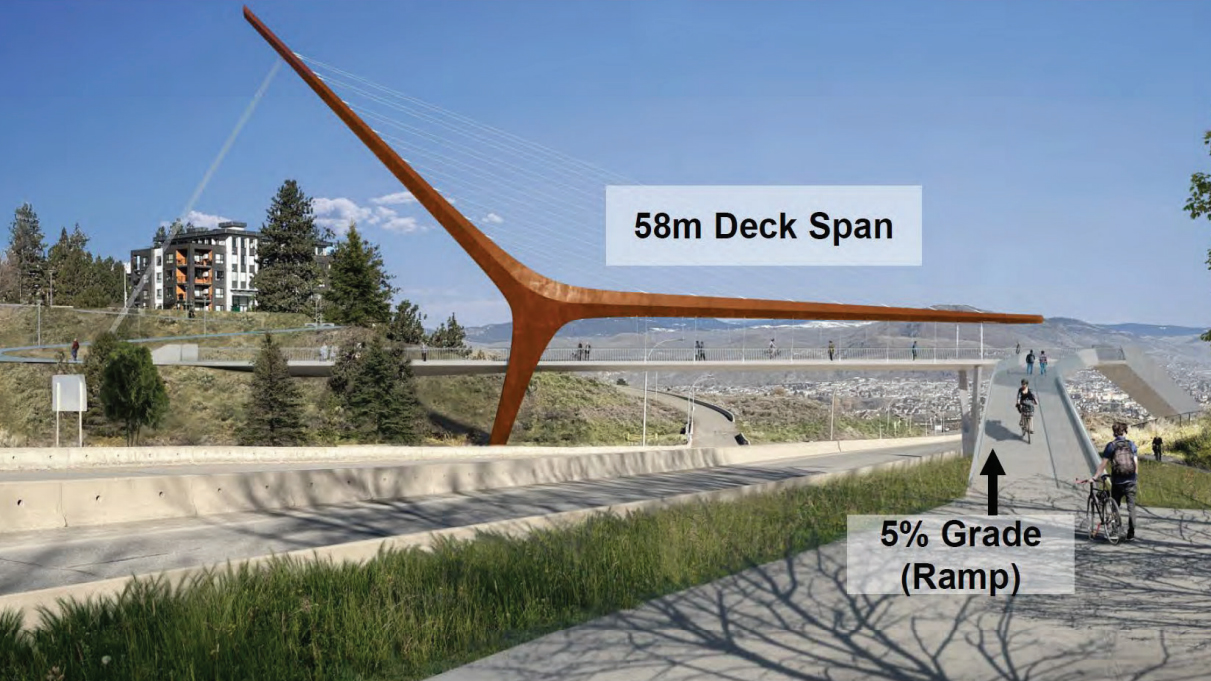Following a summer consultation process, TRU’s proposed pedestrian overpass connecting East Village and the main campus over Summit Drive now has a recommended location.
JP Steiner and Associates, an independent third party invited by TRU, completed a study on campus in June to determine the final location. Two separate studies took place over the past 12 years to study the proposed overpass, but TRU felt one more was necessary.
“We brought [JP Steiner and Associates] in to look at all the important aspects of bridge location,” said Matt Milovick, TRU’s vice president of administration and finance. “We wanted to better understand traffic patterns, safety considerations, and the future growth of our campus and the surrounding community before we would commit to a specific location for the bridge.”
Based on their consultation, the original northernmost location, preferred by the city, is the best site.
“The city’s preferred destination was based on data which was essentially 12 years old … it needed some refreshing,” Milovick said. “[JP Steiner and Associates] confirmed that based on everything, the 2012 recommendation is still the right recommendation.”
TRU sent the report garnered from the study to the city, and they are awaiting confirmation from the city on this final location.
City of Kamloops’ Development, Engineering and Sustainability Director Marvin Kwiatkowski confirmed that the city has received the report. However, its details and the city’s response remain unknown until the report is presented to the city council later.
“Once city council has had an opportunity to digest that [info], we’re more than happy to make that document public,” Milovick said.
The project was originally estimated to cost $10 million, with the city and the university splitting the bill. However, Milovick said he would not be surprised if that figure has increased since the original projection.
“We are still interested in contributing $5 million to a project, but not much beyond that,” Milovick said. “It may be that if there’s a desire to continue with this project, we find a way to build a structure within that $10 million envelope.”
The project aims to decrease the risk of road accidents by giving pedestrians an alternative to jaywalking across Summit Drive from East Village.
“It’s a win-win for everybody. It connects the university to city cycling infrastructure,” Milovick said. “We want to be part of the active transportation solution in the city.”

